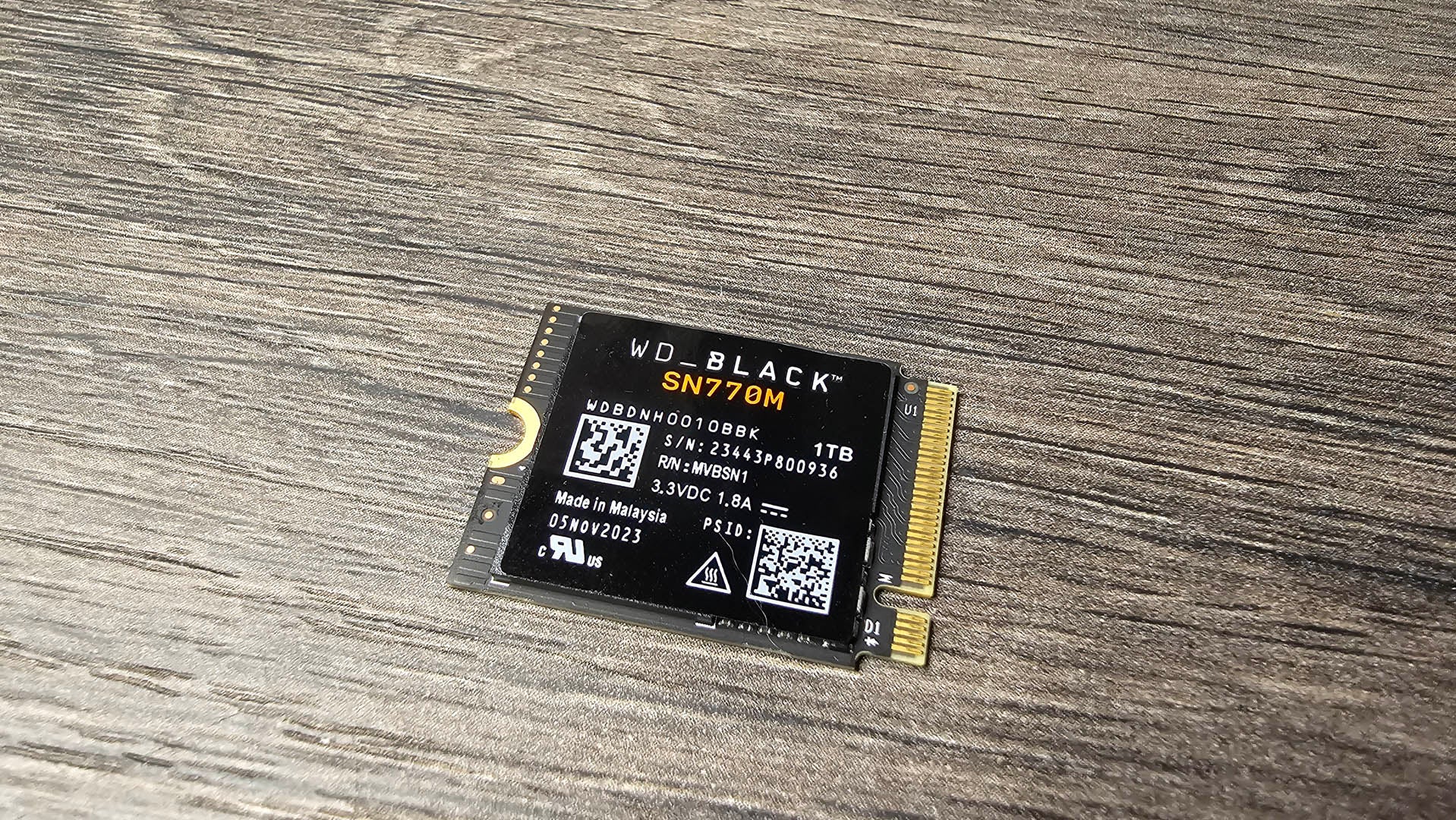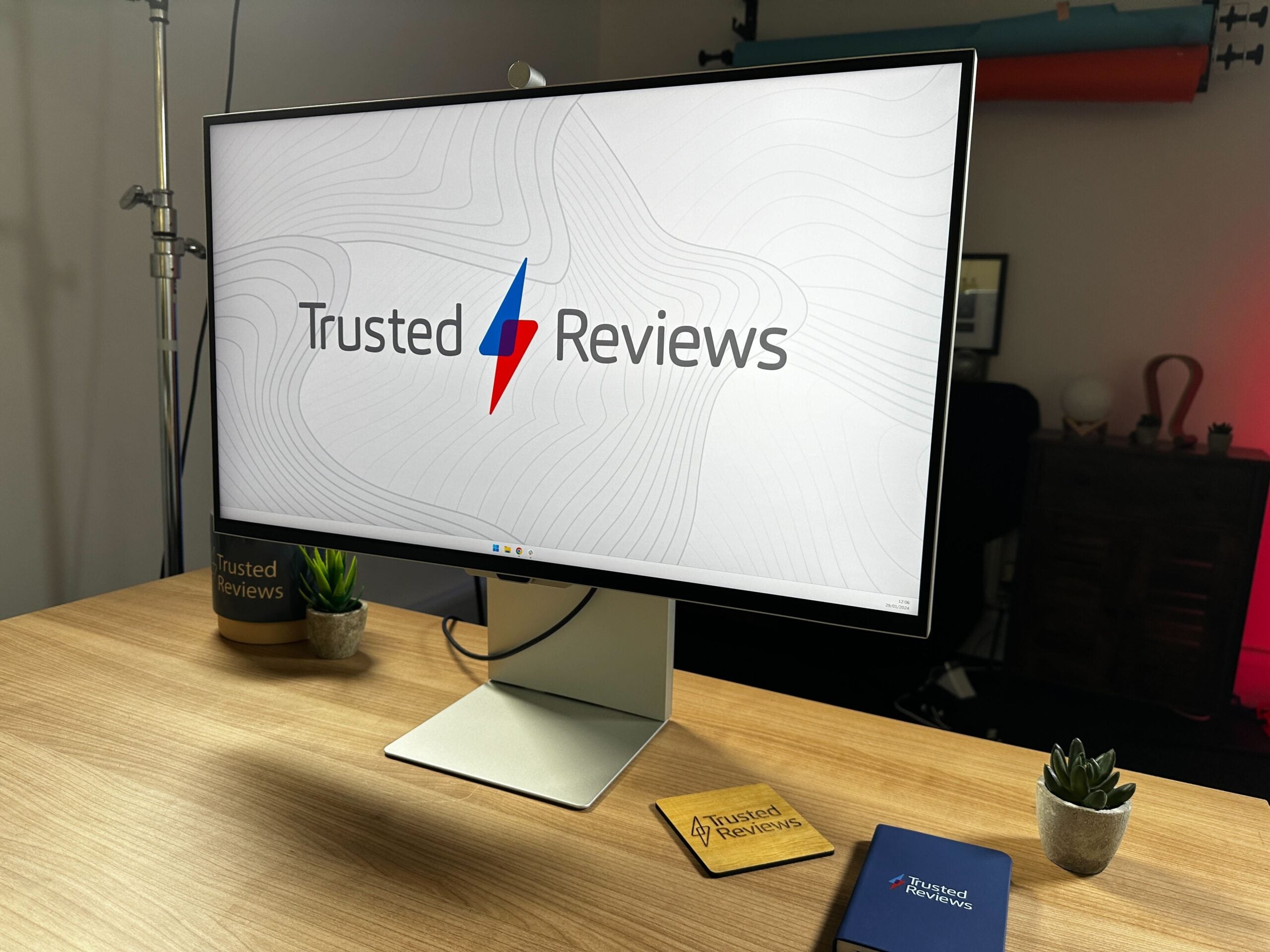Razer Blade 16 (2024) Review
A fantastic OLED upgrade
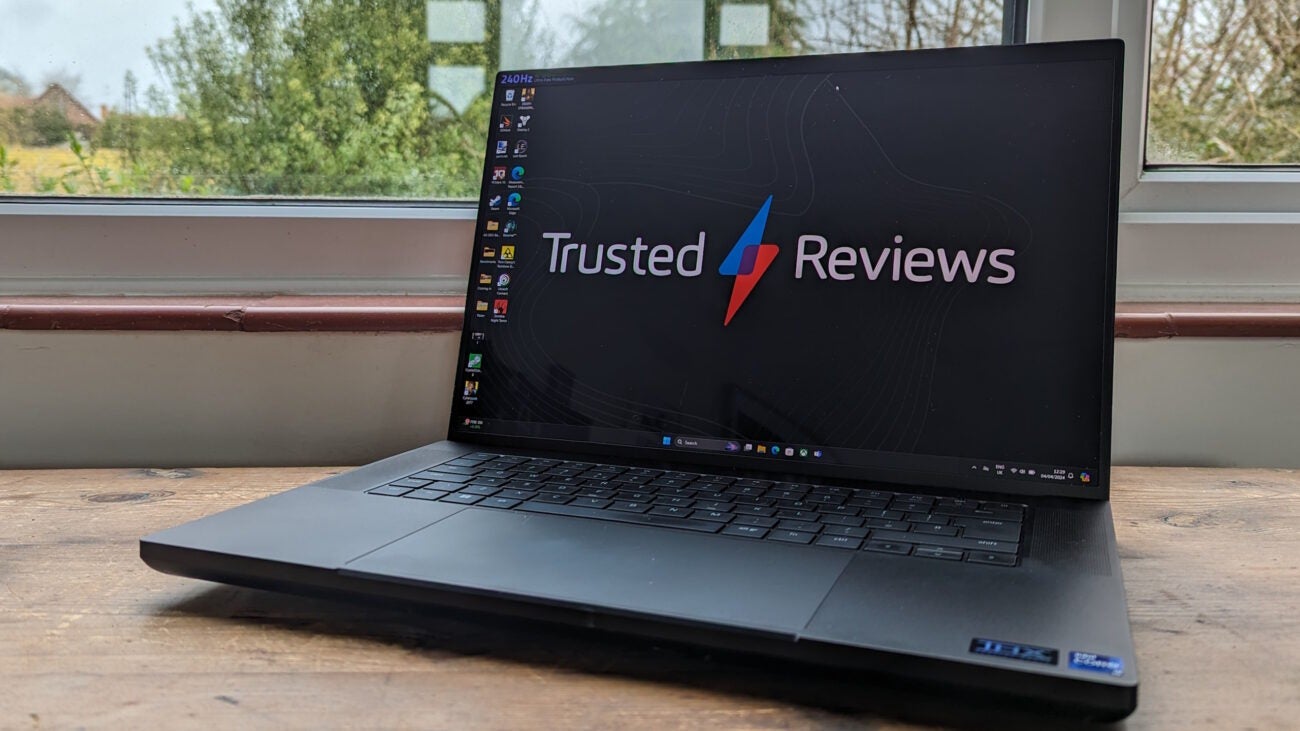
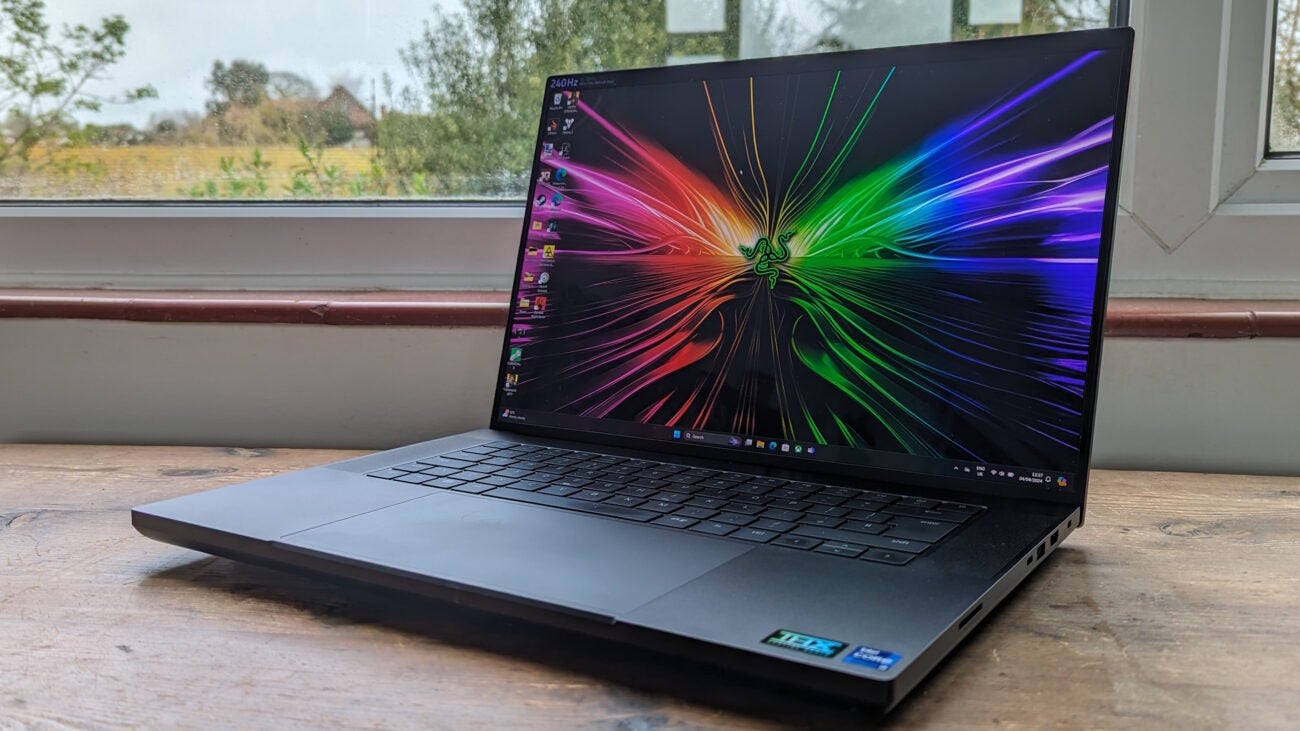
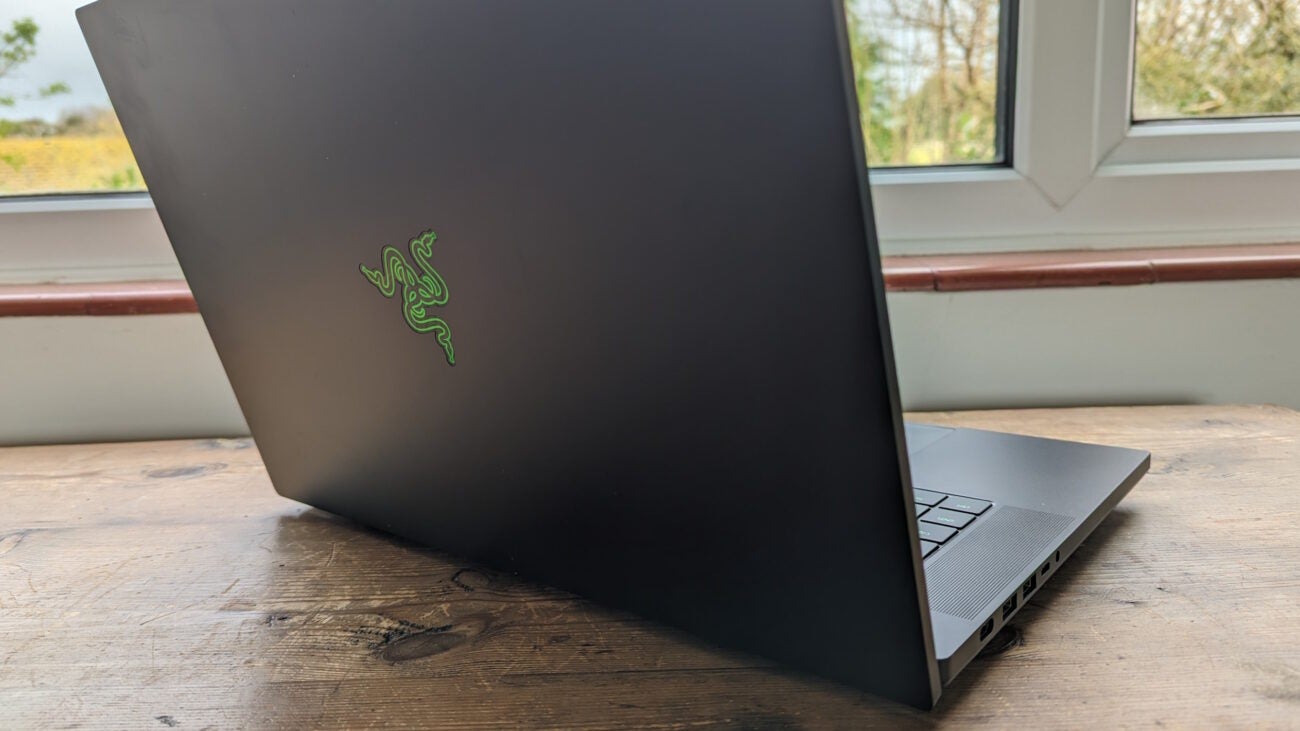
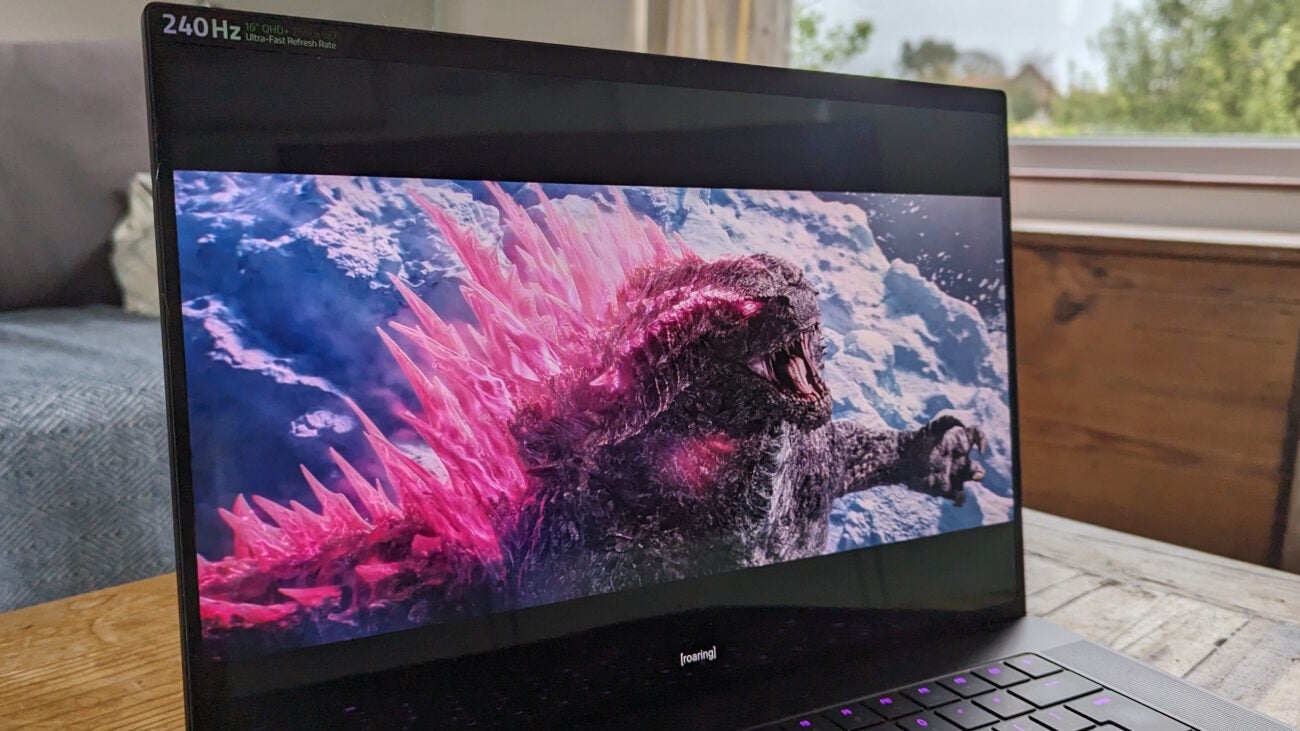
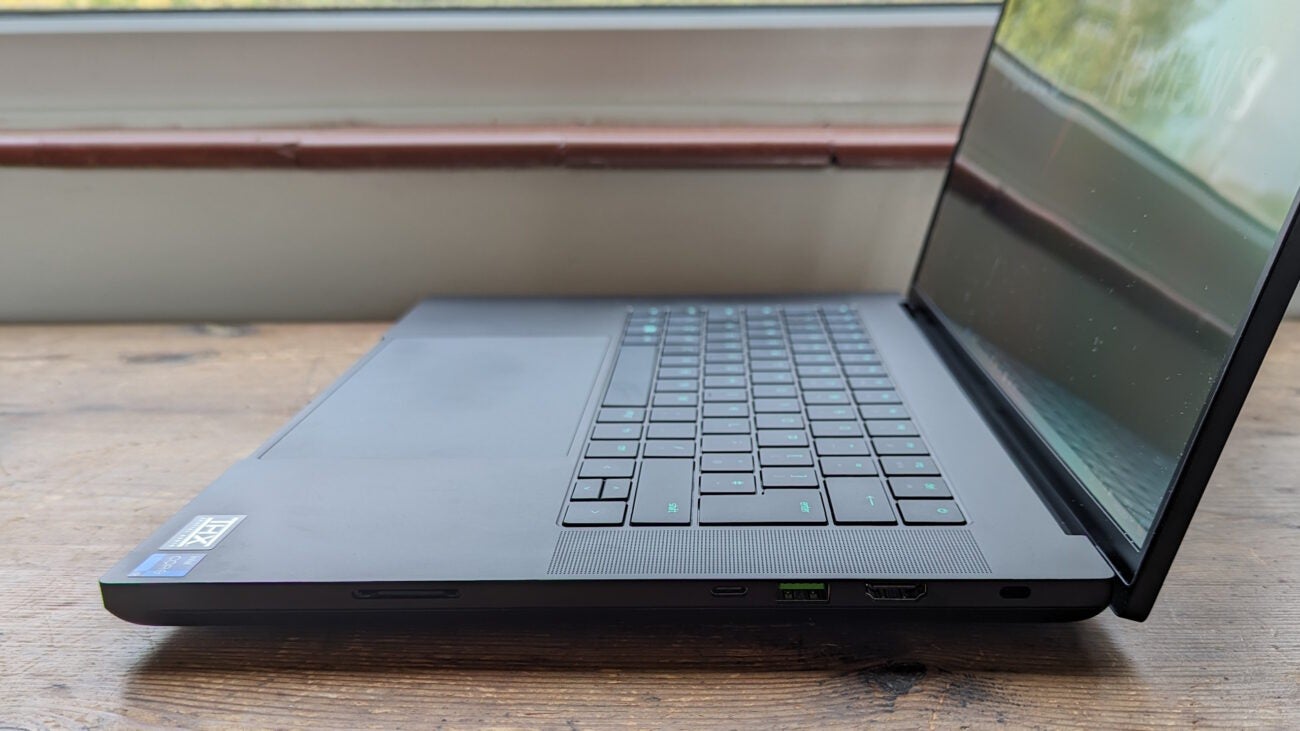
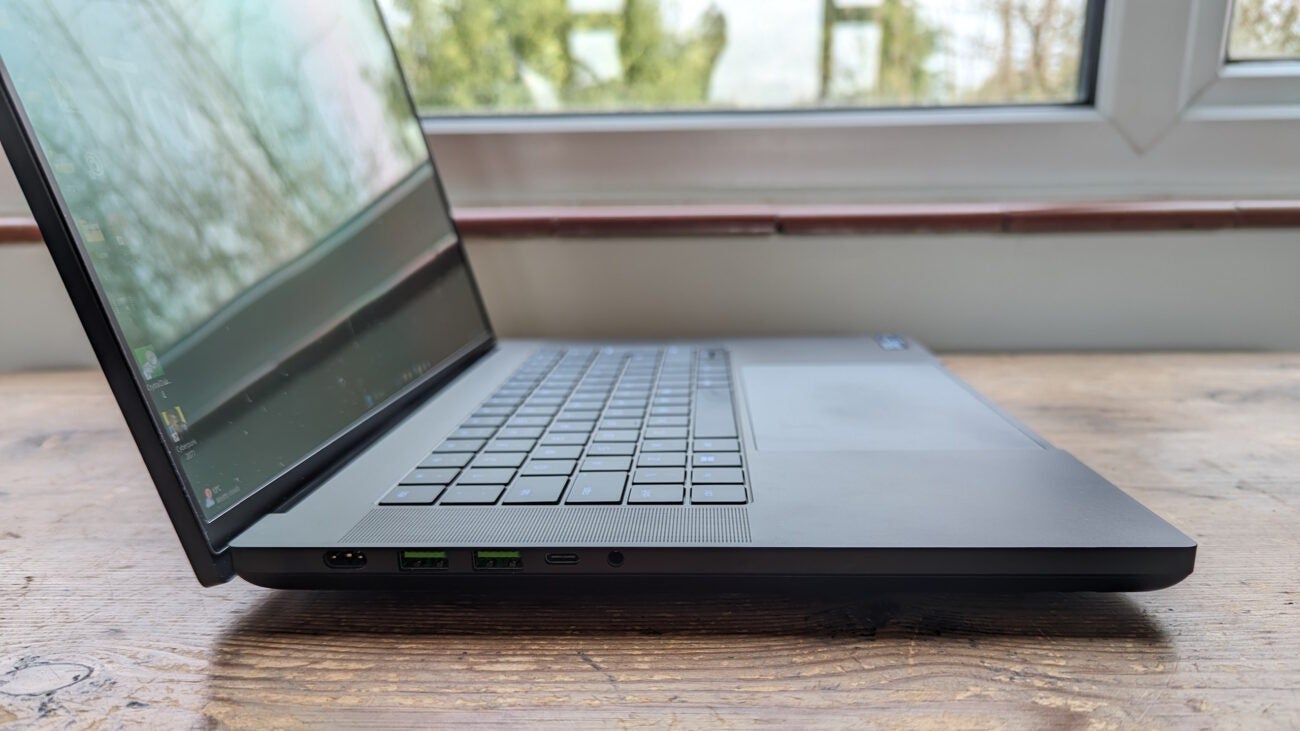

Verdict
With stronger performance and a better screen than last year’s model, the Razer Blade 16 (2024) is another superb gaming laptop with an understated style. However, it’s up against such stiff competition at this price.
Pros
- Superb OLED screen
- Compact and stylish design
- Meaty specification
- Excellent keyboard
Cons
- Oversensitive trackpad
- Not quite as fast as larger competitors
- High price
Key Features
- Zero compromise gaming in a compact bodyRazer has crammed a 16-inch screen and killer gaming specs into the body of a 15-inch gaming laptop. You get the full gaming experience without a huge and heavy machine.
- 16-inch OLED displayNot only do you get the perfect contrast and vibrant colour of OLED, but with a QHD+ resolution and a 240Hz maximum refresh rate. Everything you play or view looks incredible.
- Core i9 meets RTX 4090Only the CPU has changed since last year’s model, but you’re still getting the strongest CPU/GPU partnership for gaming, capable of running just about anything everything at high frame rates.
Introduction
The Razer Blade 16 made some waves last year, cramming a 16-inch screen into what would typically be a 15-inch body, on top of a powerful gaming spec capable of running most games at the native QHD+ resolution.
It also came with an unusual party trick: a dual resolution Mini LED display that could switch between Full HD and QHD+ resolutions so that gamers could run more demanding games at 1080p and have a chance of using the panel’s maximum 240Hz refresh rate. The 2024 update is a little more conservative. Dual Mode displays are out and OLED displays are in, with a 2560×1600 resolution OLED screen that – in a Razer first – supports a 240Hz refresh.
Beyond this, new features are roughly what you might expect, with the old 13th generation Core i9-13950HX CPU switched out for the cutting edge Core i9-14900HX. With no new GPUs to put into action, Razer has stuck to the existing RTX 4070, 4080 and 4090 options, while it comes with between 16GB and 96GB of RAM and up to 8TB of fast NVMe SSD storage.
Aside from the screen, we’re not talking about massive changes, but is it enough to make sure the Razer Blade 16 still matters in what’s become a very competitive area of the gaming laptop market? I’ve spent the last couple of weeks using the new Razer Blade 16 to find out.
Design and keyboard
- Compact footprint for a 16-inch laptop
- Subdued lighting and stylish design
- Keyboard has a quiet, light but subtly clicky feel
Not much has changed in the design since last year’s model; the Razer Blade 16 is compact for a 16-inch laptop, but still not what you could exactly call slim or light. While the desktop footprint is comparatively tidy at 355mm by 244mm, it’s still a chunky 22mm thick and the 2.45Kg means it’s more likely to be desk bound for most of its working lifespan than lugged around all day in a bag.
The Asus ROG Zephyrus G16 is noticeably thinner and lighter, and it doesn’t help that the 330W GaN power supply bundled in is an absolute beast, weighing nearly 800g without the mains cable attached.
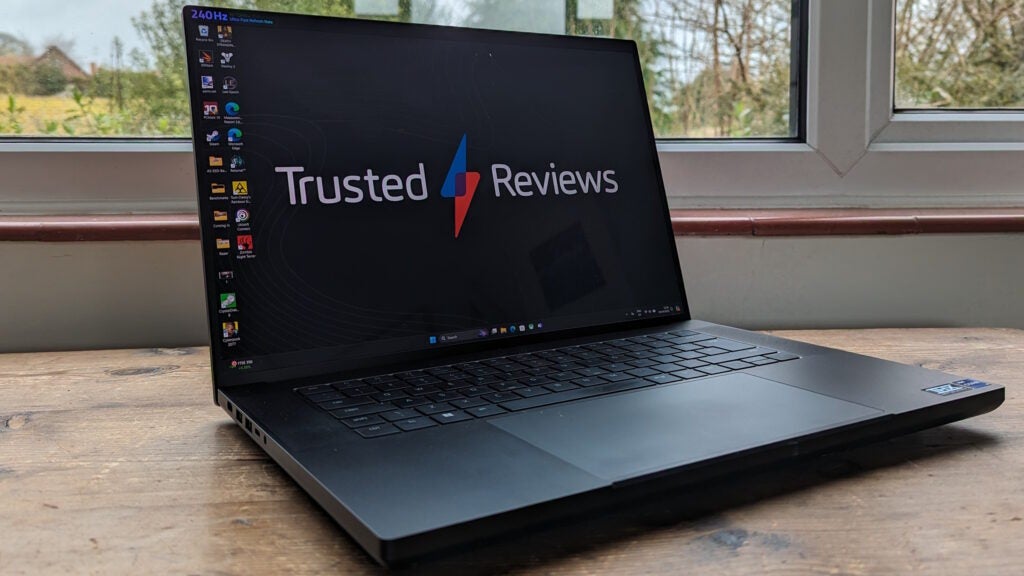
I rather like the understated design, with its matte black anodised aluminium shell. The finish is a bit of a greasy fingerprint magnet, but not the worst I’ve seen on this account.
There’s a big, bright green illuminated Razer logo on the lid, but otherwise it’s only the RGB backlit keyboard that screams of any gamer bling, and even here you have a lot of control over how big or low key you want to with colours and animated effects. My one complaint is that the lighting only shines through the main key legends and not through the extra symbols and punctuation marks. It’s not a problem while you’re gaming, but it can be if you’re trying to type in gloomy or dark conditions.
As for the feel of the keyboard, it gives you an effective balance between gaming and productivity, with a more clicky, mechanical feel that works well when you’re hitting hotkeys in RPGs and strategy games, but the kind of travel and quiet, light response you want when you’re trying to work your way through an email or a document.
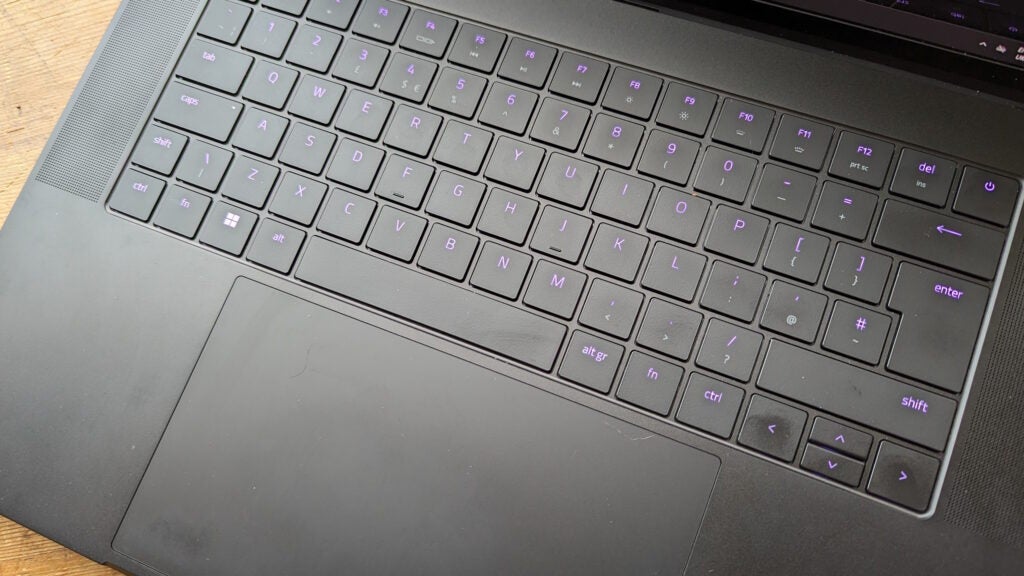
The trackpad, sadly, is a bit of a disaster. On the plus side, it’s enormous and very sensitive. Used carefully, you can make accurate selections and it always picks up multitouch gestures and quick taps. However, it’s actually a little too sensitive and there seems to be no effective palm rejection.
In fact, during use I always seemed to be pulling off accidental gestures to switch desktops or close down active windows. While typing, I kept on finding that the cursor had gone rogue and had selected a line way up from where I was actually working on the screen. I thought this might be me, but then I checked Adam’s review of last year’s model to find he had the exact same issue. It says a lot that I’m now typing this on the Blade 16 with the touchpad disabled and my wired gaming mouse plugged in.


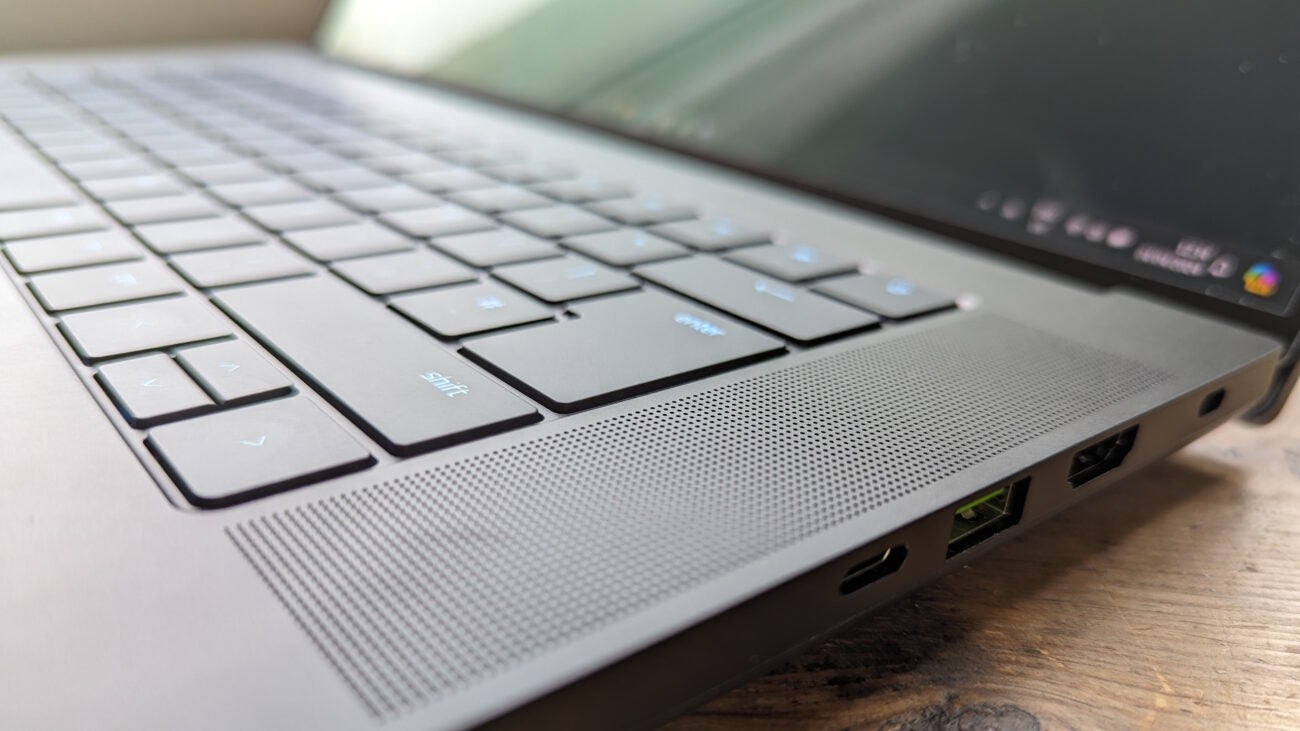
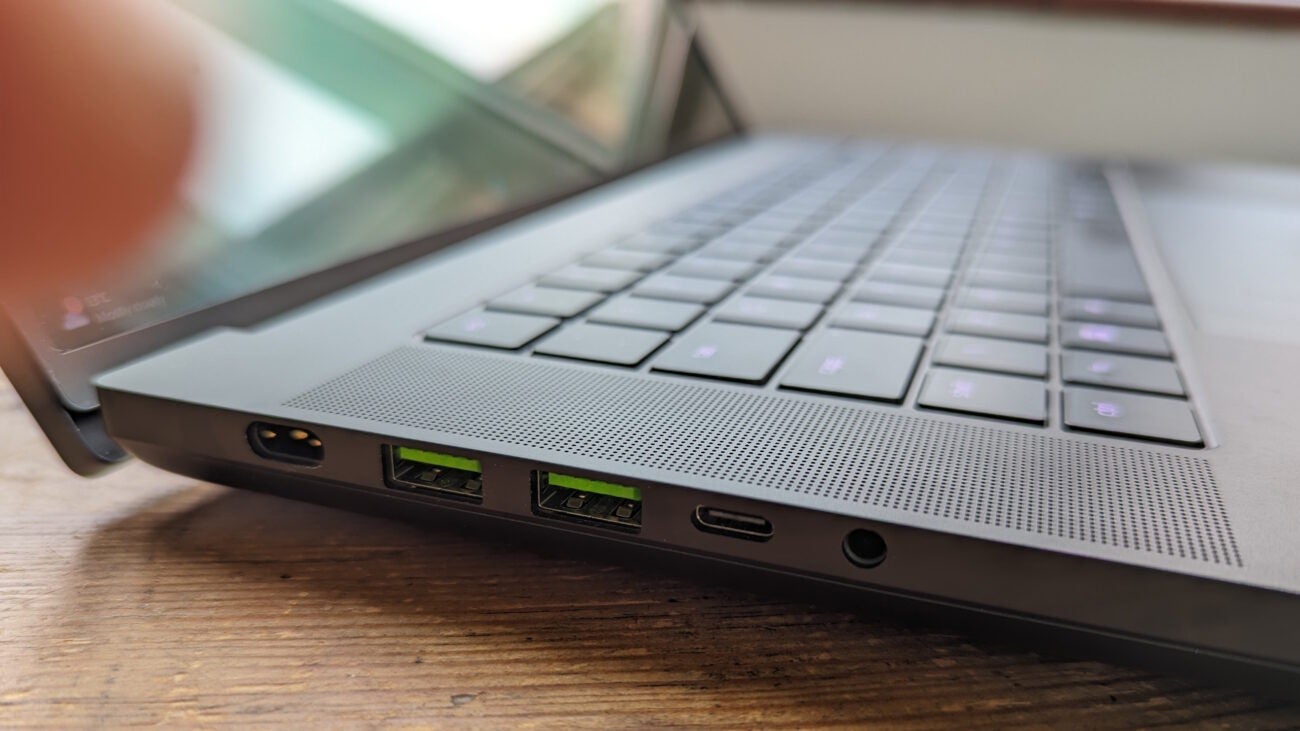
I’ve no serious complaints about the port selection. There’s still just one Thunderbolt 4 port, but you also have a USB 3.2 Gen 2 Type-C along with an HDMI 2.1 output, three USB 3.2 Gen 2 Type-A ports, an SD card reader and a headset socket. There’s no Ethernet for speedy wireless networking, but with Wi-Fi 6E onboard, along with Bluetooth 5.4, that’s not a massive issue.
Razer has announced a range of sustainability goals and promised to use recycled or recyclable materials across its product lines by 2030. Right now, though, there’s no sign that any such materials are used in this particular laptop. The packaging is primarily cardboard, but with some inflated polythene materials used for padding.
Screen
- OLED display with QHD+ resolution and 240Hz maximum refresh
- Expect excellent clarity, colour and contrast
- THX speakers promise strong spatial audio
The OLED screen is billed as the biggest selling point of the Razer Blade 16 (2024), and it really is something of a triumph. The combination of the 16-inch size, 2560 x 1600 resolution and superb contrast gives you awesome levels of clarity, with deep blacks and some stunning vibrant colours.
If I’ve enjoyed gaming on the Razer Blade 16 – and I have – it’s because nearly everything you play looks fantastic, especially anything with neon hues, rich and detailed textures, bright highlights and atmospheric lighting effects. I’ve been revisiting old haunts in Destiny 2 and enjoying Cyberpunk 2077 just because the game worlds continually make you go wow on this display.
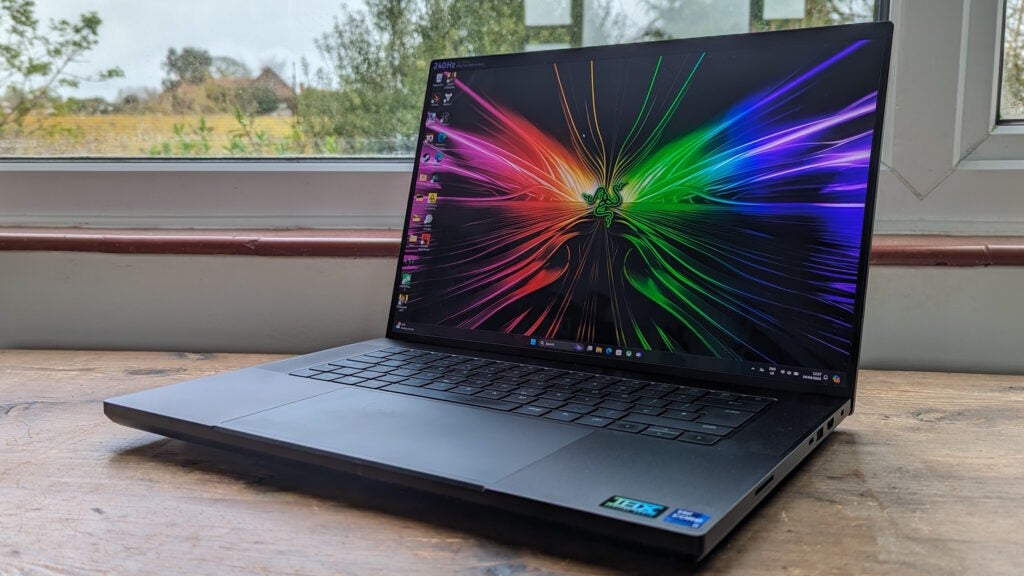
It’s also a great bet for eSports fans, just because you have the OLED screen and 240Hz refresh rate. Play something that can run at 1080p/1440p at 120Hz or more and you’re in for beautifully smooth visuals. Your kill/death ratio might not actually go up, but you won’t be able to blame this display for that.
In terms of numbers, you’re looking at a maximum brightness of 417.3 nits with perfect blacks and OLED’s usual infinite contrast. That’s not the 1000 nits that some Mini LED panels reach, but it’s still more than enough for good usability in most indoor conditions and great HDR effects.
It hits 99.9% sRGB coverage with a 153.9% gamut volume, and 99.9% of the DCI-P3 colour space with a 107.6% volume. With an average Delta E of 0.62 with HDR enabled it’s capable of handling colour critical creative work, and it’s as capable with movies and streaming series as it is with games. Everything you watch just pops.
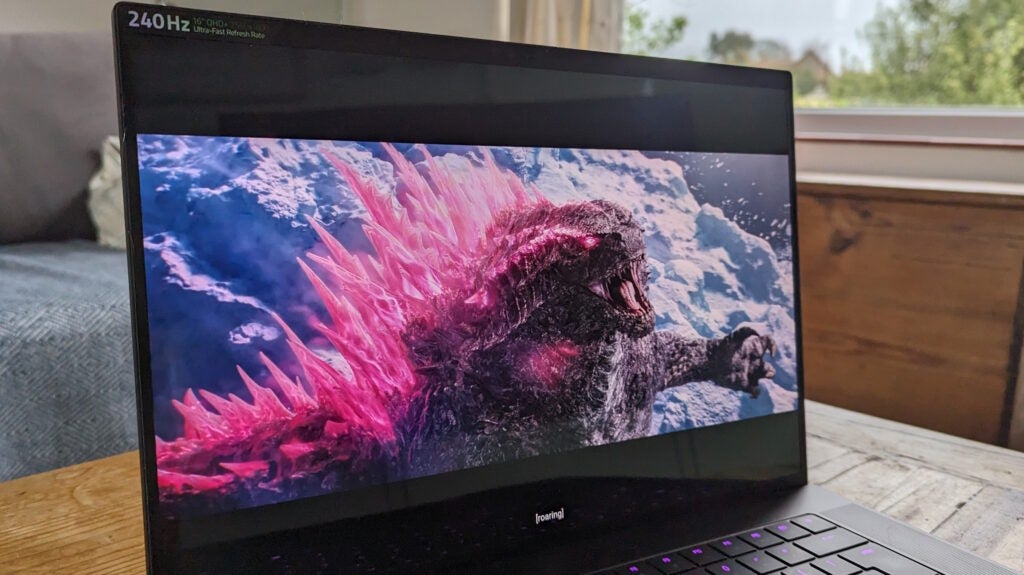
There’s equally good news on the audio front. I normally take THX Spatial Audio branding with a pinch of salt, but the output from the Blade 16’s dual tweeters, dual subwoofers speaker array is surprisingly convincing, delivering clear and immersive sound in both games and movies. It’s fine for music too, with a much more natural, rounded sound than most other gaming laptops can muster. You might not pick up the details that you would on a good set of headphones, but it’s an enjoyable way to get some background music while you’re working.
Performance
- 14th-gen Core i9 CPU all but guarantees great all-round performance
- RTX 4090 delivers great frame rates in demanding AAA games
- You can still use DLSS 3.0 to boost frame rates
The Intel Core i9-14900HX in the new Razer Blade 16 (2024) is a monstrously powerful processor, with eight Performance cores and sixteen Efficient cores capable of handling 32 simultaneous threads at speeds of up to 5.8GHz on the P cores and 4.1GHz on the E cores. With 32GB of RAM on our test model and the RTX 4090, it’s only right to expect stupendous levels of speed.
And for the most part, that’s exactly what you get. The scores in our Geekbench 6, PC Mark 10 and Cinebench R23 benchmarks place the Blade 16 in the top tier of gaming laptops, close to the Acer Predator Helios 18 and comfortably ahead of last year’s model.
It’s a blazingly fast laptop that’s going to be overkill for normal productivity work and very comfortable handling 3D content creation or sophisticated 4K video editing. However, it’s not quite at the top of that top tier, where you’ll find the likes of the Asus ROG Strix Scar 18; the latter pulls ahead of the Blade 16 in the Cinebench benchmark and, by a smaller margin, in Geekbench 6.
In games, the Blade 16 gives the Scar 18 stiffer competition. The results in the Returnal benchmark are nearly identical at FHD and QHD resolutions, and the Blade 16 actually pulls ahead with DLSS enabled in QHD to hit 142fps to the Asus’s 136. The Asus comes out on top in Cyberpunk 2077 at 1080p without ray tracing, but only by 3fps, while at QHD the Razer is the victor, at 87fps to 83fps.
It holds that lead with RT Ultra settings both at FHD and QHD resolutions, and can even manage 39fps at the native 1600p. Enable DLSS 3.0 and you can take that up to 75fps – or a staggering 118fps with frame generation toggled on. That’s incredibly smooth for such a demanding game, though I still spotted some minor hitches and stutters here and there.
With this spec, that 240Hz refresh rate isn’t just for show. In Rainbow Six: Extraction it hit an average frame rate of 252fps at 1080p and 194fps at QHD, outpacing even the Acer Predator Helios 18.
Software
- Minimal unwanted bloatware
- Razer Synapse provides comprehensive control of the system and lighting
Razer is one of the better manufacturers when it comes to not installing bloatware. You’ll find no unnecessary utilities or trials of VPNs and anti-virus tools here. Instead, the main system application is Synapse, which might be familiar if you’ve used the brand’s gaming peripherals.
Synapse gives you all of the performance monitoring and management tools you could wish for, along with two approaches to customising the RGB lighting; the basic Lighting panel, where you’ll find simple animated effects, and the Chroma Studio control panel, where you can set up more sophisticated zone lighting and per-key effects.
Synapse is slick, full of features and created with gamers in mind, making it a better option than you’ll find on the gaming laptops of some mainstream brands.
Battery life
- With this spec and screen, even a big 95.2WHr battery can struggle
- The chunky 330W charger can get you back in action fast
Battery life on big-screen gaming laptops is rarely stellar, so it’s no surprise to see the Razer putter out in the PC Mark 10 Modern Office benchmark after just three hours and zero minutes.
That’s thirteen minutes less than the Predator Helios 18, which has a bigger mini-LED screen to power, but forty-eight minutes more than the ROG Strix Scar 18, which could only manage two hours and 12 minutes. The Asus ROG Zephyrus G16 fares much better; despite having a similar 16-inch OLED screen, it held up for nearly six hours. However, it also has a lower spec, with a more energy-efficient Core Ultra 9 185H CPU instead of the Blade 16’s Core i9-14900HX.
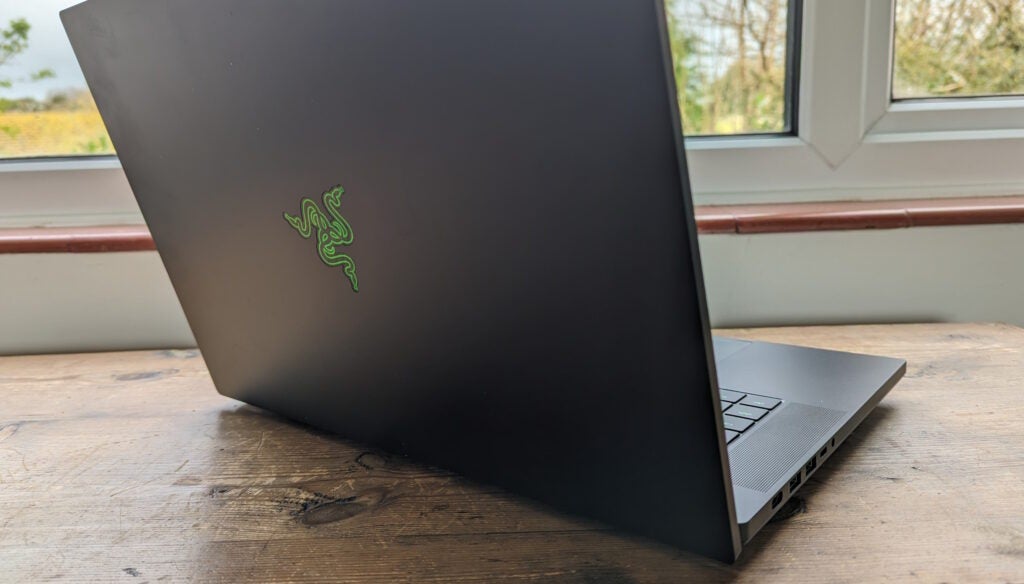
If the battery life isn’t exactly epic, at least the 330W charger does its work quickly. 30 minutes plugged in will get you back to 36%, and you can be fully charged well within 90 minutes.
Latest deals
Should you buy it?
You want a compact gaming laptop with real power
The Razer Blade 16’s biggest strength is that it gives you the performance of a monster gaming laptop without all the associated bulk and weight, along with a fantastic OLED screen and brilliant sound.
You value portability or want bigger and faster
At over £4000 this is nobody’s idea of cheap, and for the same money you could have even better performance and a bigger screen. Alternatively, you could look for a slimmer and lighter model, such as the ROG Zephyrus G16, even if it means taking a hit on raw gaming horsepower.
Final Thoughts
The Razer Blade 16 (2024) carries on the good work started by last year’s version, with a slight bump in speeds and an amazing screen that’s going to make more sense to the majority of gamers. It’s compact, stylish and well-built, with more than enough 3D power to handle AAA games for years to come.
However, the smaller dimensions and style come at a slight performance cost, and recent 18-inch rivals like the ROG Strix Scar 18 and Predator Helios 18 give you even more power for the same kind of budget. What’s more, we’re seeing a new breed of slimmer, lighter laptops like the ROG Zephyrus G16 that have a slightly larger footprint, but arguably beat the Blade 16 on looks and weight. This remains a fantastic gaming laptop, but there’s stiffer competition this year, especially at this kind of price. Check out our Best Gaming Laptop guide for even more options.
How we test
Every laptop we review goes through a series of uniform checks designed to gauge key things including build quality, performance, screen quality and battery life.
These include formal synthetic benchmarks and scripted tests, plus a series of real-world checks, such as how well it runs popular apps.
We used the device as our main laptop for at least a week.
Tested the performance via both benchmark tests and real-world use.
We tested the battery with a benchmark test and real-world use.
FAQs
The Razer Blade 14 (2024) weighs in at 2.4kg, which means it’s probably too hefty to carry in a bag on the regular, but still light enough to easily carry it from desk to desk.
Yes, it is possible to upgrade the RAM on the Razer Blade 14 (2024) laptop.
It depends on what kind of performance you want to prioritise. Upgrading the RAM will ensure a smoother performance when juggling multiple workloads, while upgrading the SSD will increase the storage capacity so you can install more games and applications, while also boosting the speed of game loading times and the boot-up time of your laptop.


